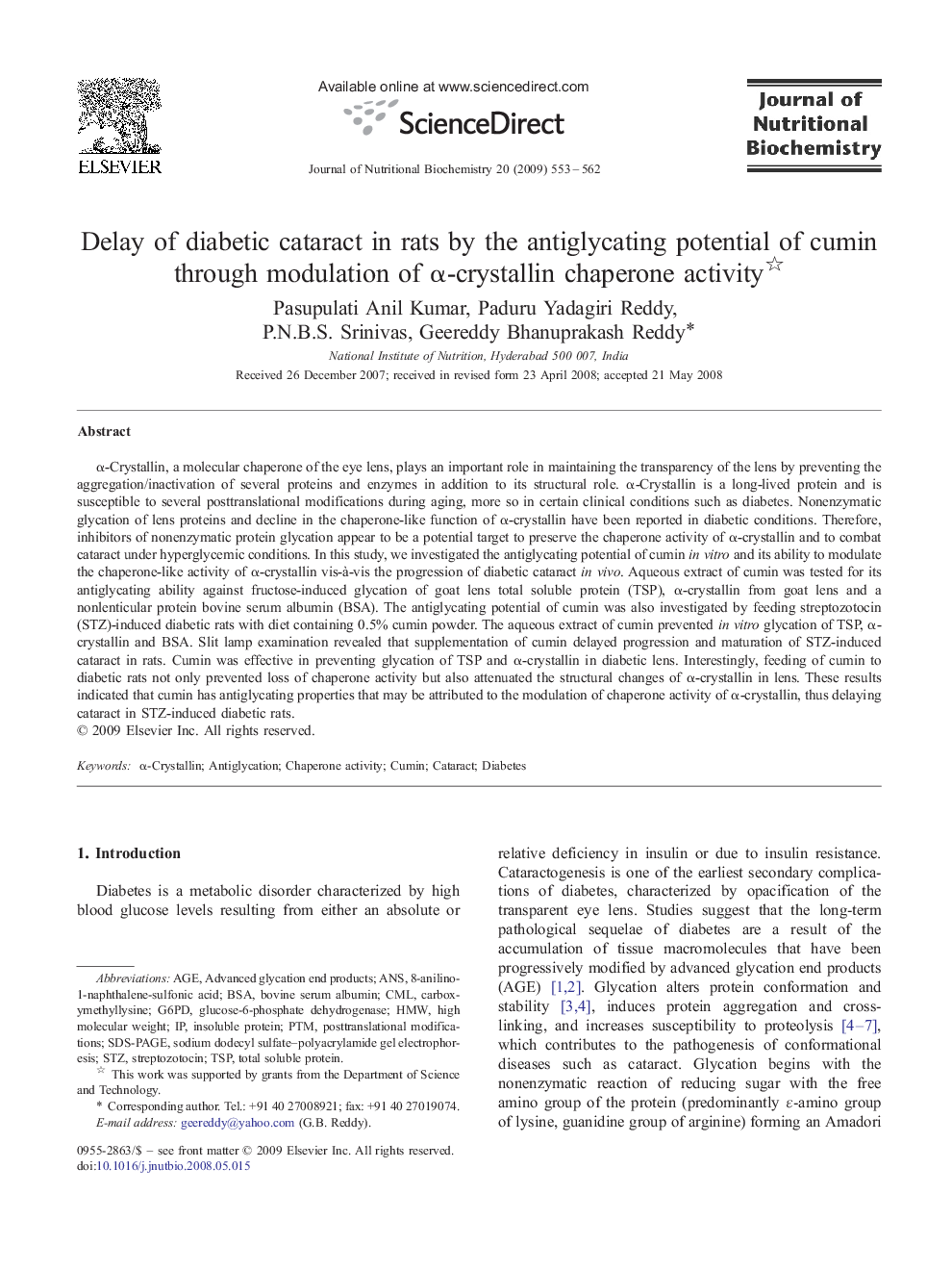| Article ID | Journal | Published Year | Pages | File Type |
|---|---|---|---|---|
| 1990210 | The Journal of Nutritional Biochemistry | 2009 | 10 Pages |
α-Crystallin, a molecular chaperone of the eye lens, plays an important role in maintaining the transparency of the lens by preventing the aggregation/inactivation of several proteins and enzymes in addition to its structural role. α-Crystallin is a long-lived protein and is susceptible to several posttranslational modifications during aging, more so in certain clinical conditions such as diabetes. Nonenzymatic glycation of lens proteins and decline in the chaperone-like function of α-crystallin have been reported in diabetic conditions. Therefore, inhibitors of nonenzymatic protein glycation appear to be a potential target to preserve the chaperone activity of α-crystallin and to combat cataract under hyperglycemic conditions. In this study, we investigated the antiglycating potential of cumin in vitro and its ability to modulate the chaperone-like activity of α-crystallin vis-à-vis the progression of diabetic cataract in vivo. Aqueous extract of cumin was tested for its antiglycating ability against fructose-induced glycation of goat lens total soluble protein (TSP), α-crystallin from goat lens and a nonlenticular protein bovine serum albumin (BSA). The antiglycating potential of cumin was also investigated by feeding streptozotocin (STZ)-induced diabetic rats with diet containing 0.5% cumin powder. The aqueous extract of cumin prevented in vitro glycation of TSP, α-crystallin and BSA. Slit lamp examination revealed that supplementation of cumin delayed progression and maturation of STZ-induced cataract in rats. Cumin was effective in preventing glycation of TSP and α-crystallin in diabetic lens. Interestingly, feeding of cumin to diabetic rats not only prevented loss of chaperone activity but also attenuated the structural changes of α-crystallin in lens. These results indicated that cumin has antiglycating properties that may be attributed to the modulation of chaperone activity of α-crystallin, thus delaying cataract in STZ-induced diabetic rats.
